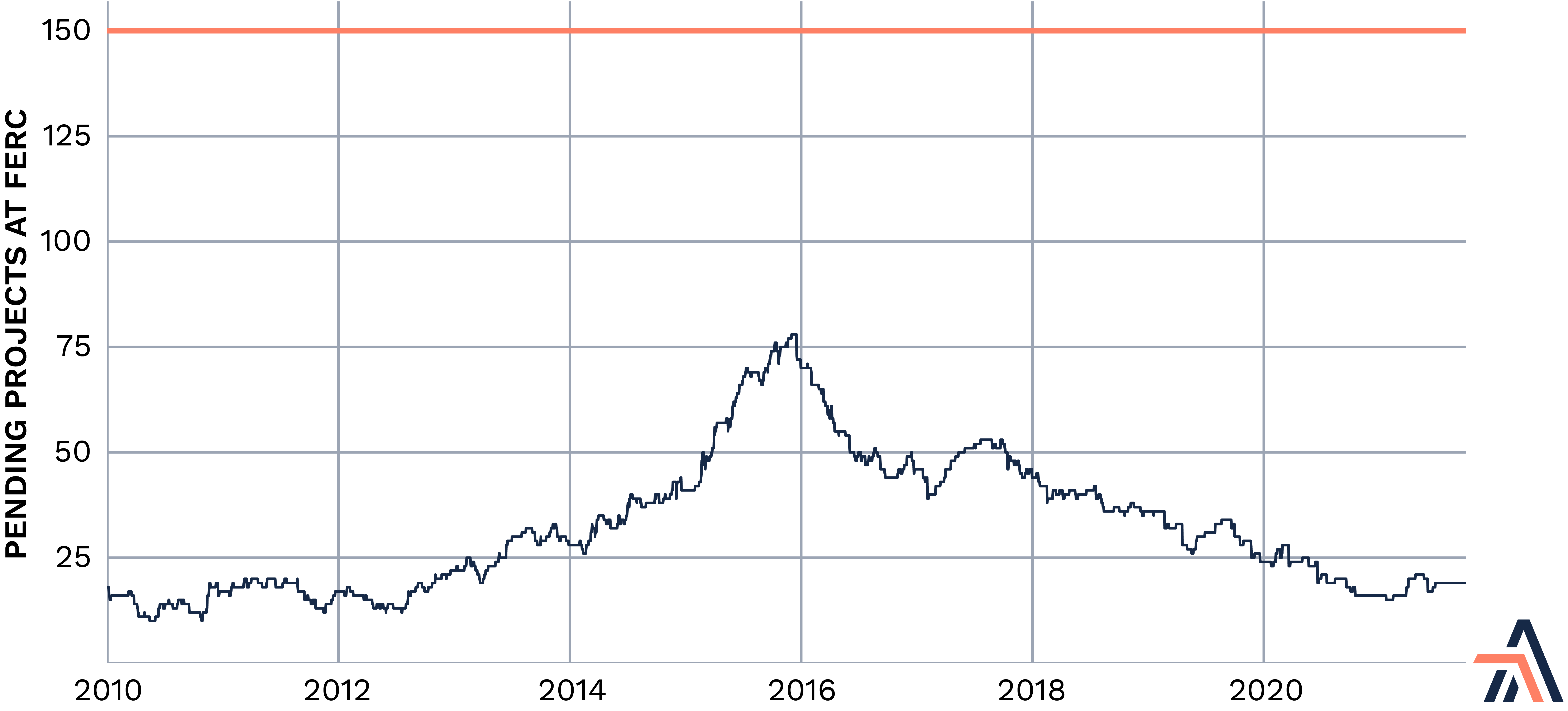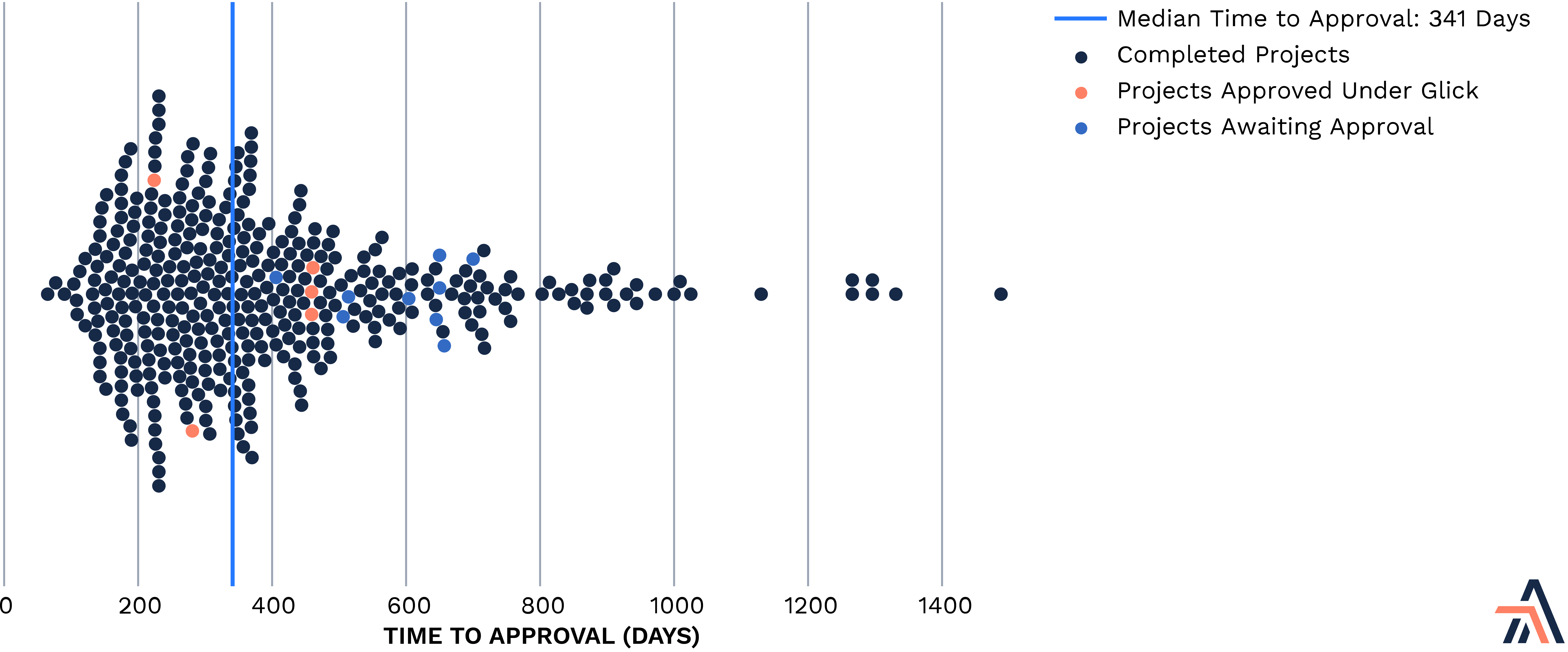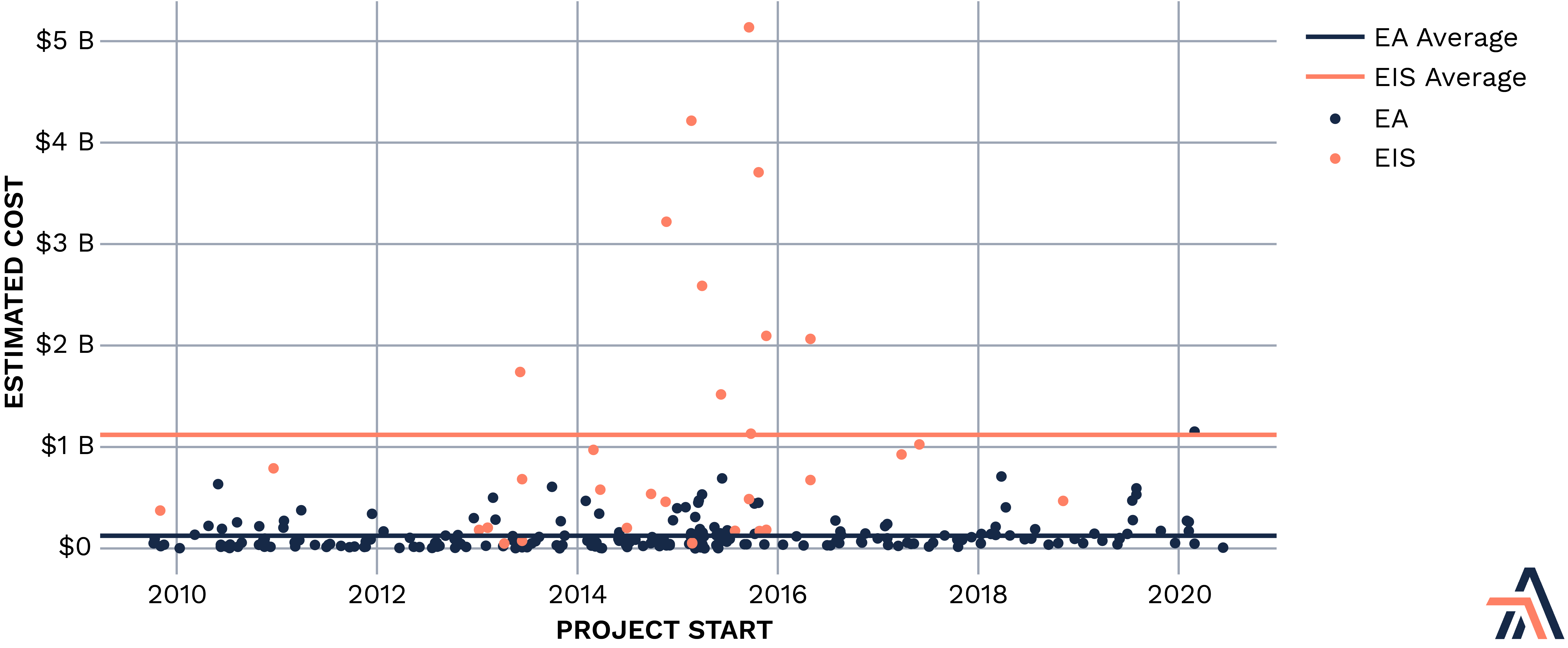FERC Chairman’s Actions Confirm that All Pipeline Expansions Require an EIS
What’s the issue?
In testimony before Congress in September, Chairman Glick made some interesting assertions, but his responses to Senator Barrasso’s pre-hearing questions were more revealing.
Why does it matter?
Because Chairman Glick and Commissioner Clements have never voted to approve a pipeline expansion project, their responses to Senator Barrasso’s questions, along with the Commission’s actual behavior, are perhaps the best guide we have for the future of pipeline projects.
What’s our view?
Chairman Glick is exercising his full authority as chairman to slow down the process of reviewing projects, despite his protestations to the contrary. Chairman Glick and Commissioner Clements believe that the greenhouse gas impacts from even the smallest of expansion projects require the preparation of a full Environmental Impact Statement, which will most likely lead to the denial of a certificate for all but the smallest of projects.
In testimony before Congress in September, Chairman Glick made some interesting statements both at the hearing and in response to questions in a letter from Senator Barrasso in anticipation of the hearing. Because Chairman Glick and Commissioner Clements have never voted to approve a pipeline expansion project, their responses to Senator Barrasso’s questions, along with the Commission’s actual behavior, are perhaps the best guide we have for the future of pipeline projects. The news is certainly not good.
What comes through clearly from the responses to Senator Barrasso’s letter is that Chairman Glick is exercising his full authority as chairman in a manner that is certainly slowing the process of reviewing projects, despite his protestations to the contrary. It is also fairly clear that Chairman Glick and Commissioner Clements believe that the greenhouse gas impacts from even the smallest of expansion projects require the preparation of an Environmental Impact Statement (EIS) and those same impacts, if not fully mitigated, will most likely lead to the denial of the certificate for all but the smallest of projects.
The Senate Hearing
On September 28, the U.S. Senate’s Energy and Natural Resources Committee held an oversight hearing of FERC where it heard from all four sitting commissioners. In apparent anticipation of that hearing, the ranking member of that committee, Wyoming Senator John Barrasso, had sent FERC a letter asking a number of questions concerning recent changes in FERC’s practices with respect to pipeline expansion projects. The hearings themselves were fairly predictable, with two exceptions. First, Chairman Glick speculated that FERC had a current backlog of over 150 pipeline and LNG projects pending before it. He also asserted that FERC’s review of those projects was happening just as fast as it had in the past. Second, he asserted that he had not established a default presumption requiring staff to prepare an EIS for every certificate proceeding.
Our Data
We were surprised by both his speculation as to the backlog of cases and to the speed with which reviews are occurring because neither seems to be supported by the data. First, even at the peak of the pipeline expansion boom, the backlog of projects pending at FERC, of the type we track in our platform, which is essentially every pipeline and LNG expansion project, had never reached close to 150 projects.

As seen above, the largest backlog of projects that was ever pending at FERC was about half of that stated by the chairman and we currently show that there are only nineteen projects pending. Further, as we discuss below, the letter responding to Senator Barrasso by Chairman Glick just days before the hearing detailed all pipeline and LNG projects pending before FERC, and that list contained only 38 projects — nowhere near 150. Also, the data does not support the assertion that projects are being processed as quickly as they have historically.

Actions Speak Louder Than Words
While the testimony was not otherwise revealing, the letters provided by three of the four sitting commissioners, as well as FERC’s actions, show that the second assertion by Chairman Glick, while perhaps technically correct, is in practice, not the case. Senator Barrasso’s letter asked about a series of notices sent on May 27 in which FERC announced it would be preparing an EIS for a number of projects that had already completed their environmental review through the use of the less detailed Environmental Assessment (EA). Chairman Glick denied that this action essentially established a default assumption that all projects will require the preparation of the more involved EIS. But he did assert that, in his view, the Commission must address a project’s adverse impacts, including its impact on climate change, and any mitigation measures. Thus, he concluded that the preparation of an EIS may be required on a case-by-case basis when the Commission cannot determine that such climate impacts are insignificant. From Commissioner Christie’s letter to Senator Barrasso, it is clear that this determination is one being made by Chairman Glick without the concurrence of the remaining commissioners.
In spite of Chairman Glick’s assertion that there is no new “default” position concerning the preparation of an EIS, the actions of FERC show otherwise.

As seen above, the vast majority of expansion projects reviewed by FERC over the last decade were completed without the need to complete an EIS, with over 200 such projects being reviewed under an EA and fewer than 50 requiring an EIS. Using cost as a proxy for the complexity of the project, it becomes apparent that as cost increases, the need for an EIS increases as well, with the average cost of EA projects being about $125 million and the average cost of EIS projects being over $1 billion. But since Chairman Glick has been directing staff concerning the preparation of an EIS, that dollar figure has fallen dramatically, perhaps best demonstrated by two projects that until recently were pending at FERC, the Marcus Hook Electric Compression Project and the Wisconsin Access Project.
The Marcus Hook project was originally filed under the prior notice provision of Adelphia Pipeline’s blanket certificate and was for a simple 3,000 horsepower electric driven compressor that would have provided an additional 16,500 Dth/day of capacity at an estimated cost of $4.6 million, well below the $35.6 million prior notice limit. But when environmental groups objected, FERC determined it had to prepare an EIS. The preparation of that document took about ten months to complete from the date of the original filing. This inordinate delay led the project sponsor to simply withdraw its request for approval just last month.
The Wisconsin Access Project was even less significant in many ways as it was increasing the capacity of ANR’s pipeline by 50,707 Dth/day, primarily by modifying original design assumptions and software models, along with minor modifications to seven existing meter stations. The cost of the project was estimated at $5.5 million and ANR requested approval by January 1, 2022 when it filed the project on March 12, 2021. That request was almost perfectly in line with our historic models as shown below.

Our assumption, based on historical data, would be that a $5 million project that required no new above-ground facilities would be processed with an EA and take a little over five months to review. Instead, FERC has determined that an EIS is required and has estimated that it will take until March 18, 2022, over one year after the project was filed, to complete that document.
Breaking the Logjam
With the current four-member Commission, it is our belief that all pending projects are essentially stuck in a limbo caused by a split 2-2 vote of the commissioners. The good news on that front is that the nominee for the fifth seat on the Commission received a unanimous vote from the Senate committee that oversees FERC. However, until he can be seated, the only hope of breaking that logjam would be if either one, or both, of Commissioners Danly and Christie would tell the chairman that at the November meeting they are willing to concur with his decision on any of the projects that recently completed the enhanced EIS review. This would force the chairman to finally stake out a position on a project and allow there to be a court challenge to that decision. Absent such a decision by the two Republicans, however, we think the projects currently pending will remain so until the new commissioner is appointed and begins to vote.
Process Going Forward
While the chairman can assert that there is no new default position at FERC, his actions indicate otherwise. Also, his position as chairman allows him to dictate this result without any input from other commissioners, as Commissioner Christie’s letter made clear. Thus for the foreseeable future, project applicants should plan on any project that will increase the capacity of a pipeline to take a minimum of one year to complete the environmental review no matter how small the project might be and no matter how insignificant the environmental impacts from construction and operation might be.
In addition, as we warned in U.S. Senators Are Concerned About FERC Delays -- But Should Be Focused on Denials, Chairman Glick and Commissioner Clements seem to agree that, absent full mitigation of the downstream greenhouse gasses from projects as small as 15,000 Dth/day, such projects cannot possibly meet the public need standard as they understand it and should therefore be denied a certificate.
FERC has scheduled a technical conference for later this month to discuss the required extent of such mitigation measures and FERC’s ability to enforce them after a project goes into service. We do not expect that the industry will provide any advice about the types of mitigation measures on the grounds that requiring such mitigation measures is not authorized under the Natural Gas Act. We also expect that environmental groups will not provide any related advice because they view such mitigation as simply “greenwashing” and want FERC to simply deny certificates that would contribute at all to climate change. The final resolution of these issues may not come until Chairman Glick’s term ends on June 30, 2022. We expect there to be strenuous opposition from Republicans, and perhaps even Senator Manchin, concerning his reappointment, given his history of delaying and obstructing the growth of pipeline capacity.